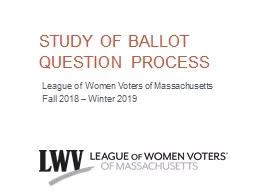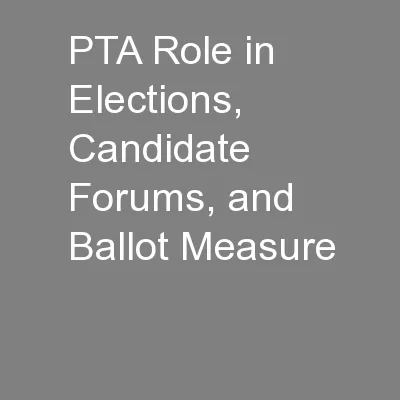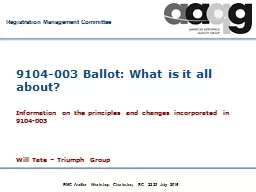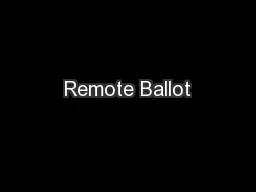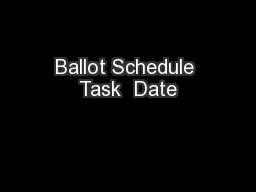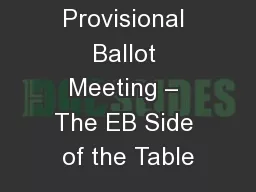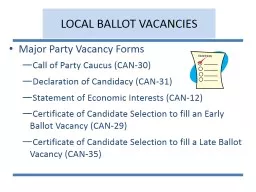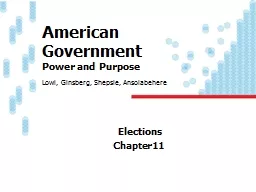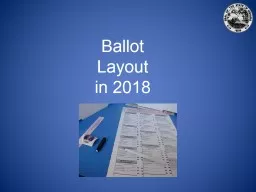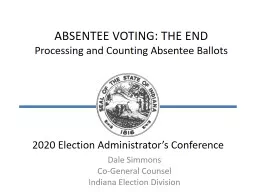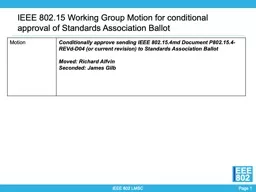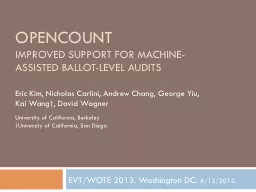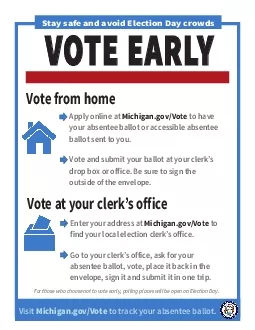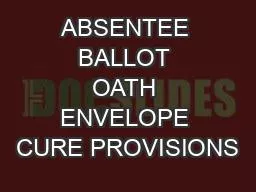PPT-Study of ballot question process
Author : stefany-barnette | Published Date : 2018-12-15
League of Women Voters of Massachusetts Fall 2018 Winter 2019 Study Goals Educate LWV members about the ballot question process in MA At each League consider through
Presentation Embed Code
Download Presentation
Download Presentation The PPT/PDF document "Study of ballot question process" is the property of its rightful owner. Permission is granted to download and print the materials on this website for personal, non-commercial use only, and to display it on your personal computer provided you do not modify the materials and that you retain all copyright notices contained in the materials. By downloading content from our website, you accept the terms of this agreement.
Study of ballot question process: Transcript
Download Rules Of Document
"Study of ballot question process"The content belongs to its owner. You may download and print it for personal use, without modification, and keep all copyright notices. By downloading, you agree to these terms.
Related Documents

